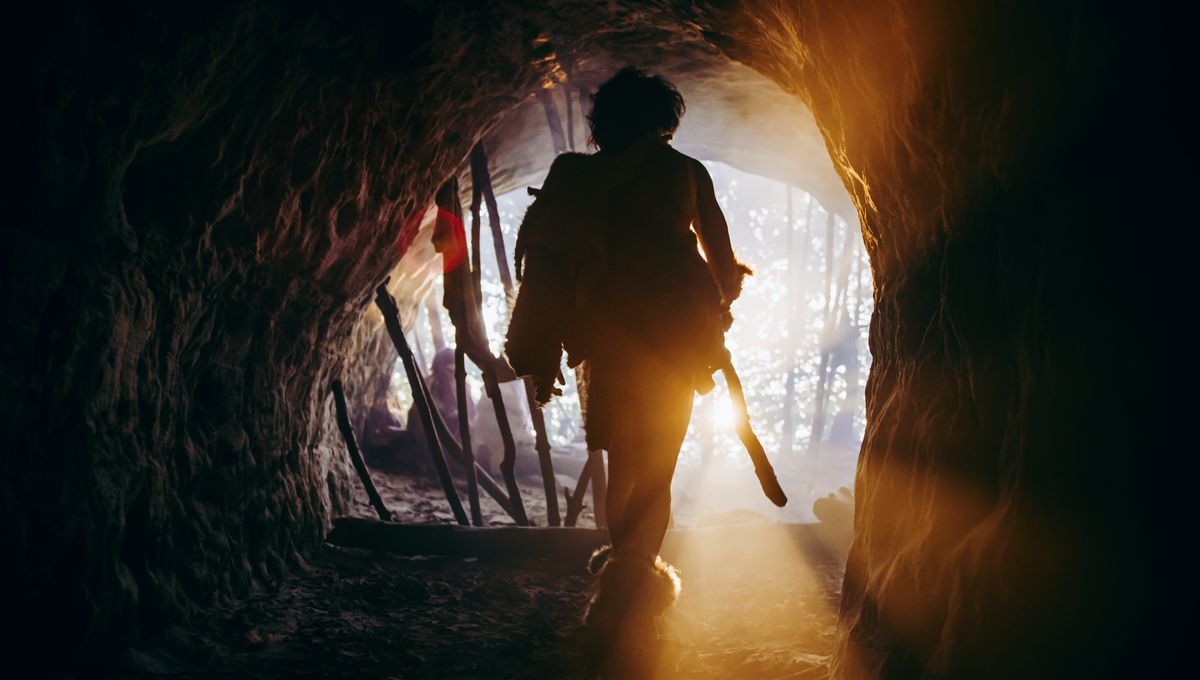
The first image that comes to most people’s mind when thinking about prehistoric humans is that of a caveman, possibly draped in a Fred Flintstone-style saber tooth tiger hide. However, while we Homo sapiens and our extinct ancestors undoubtedly spent some of our early years hanging out in caves, the reality is that we probably didn’t live in them for any extended period.
The problem with caves
ADVERTISEMENT GO AD FREE
There are many reasons why ancient humans are unlikely to have resided in caves. For one thing, they’re cold, dark, often cramped, and have poor air circulation, all of which makes them pretty unsuitable and undesirable habitations. While it’s true that these caverns would have offered vital refuge from the harsh elements during the Ice Age, the fact that they were often inhabited by fearsome predators like cave bears, cave lions, and cave hyenas would have deterred many ancient humans from making their home in these lairs.
Perhaps more relevant, though, is the fact that there aren’t actually that many caves around, and those that do exist are often found in impractical and unsuitable locations. Bear in mind that prehistoric hunter-gatherers were nomadic people who moved with the seasons and needed to set up camp close to vital resources like water and key hunting grounds. The likelihood of finding a suitable cave anywhere near the right spot as they moved from one camp to the next would have been pretty slim most of the time, which is why these ancient humans probably only lived in caves on the rare occasions that things happened to work out that way.
All things considered, then, it’s unsurprising that of all the caves containing evidence of human occupation and activities, hardly any show signs that they were actually lived in. For instance, the leftovers of prehistoric hearths and meals are pretty scarce in caves, suggesting that these caverns were mainly used for specific purposes like conducting rituals or storing certain resources.
Where did prehistoric people live?
Rather than retreating deep into the bowels of the Earth, prehistoric hunter-gatherers probably spent most of their time living in rock shelters or temporary makeshift camps in the open air, close to sources of abundant food and water. Often, these would be along the edges of lakes, rivers, or the ocean, although forests and grasslands would also have satisfied the material needs of ancient tribes at certain times of the year.
In fact, the vast majority of prehistoric sites are not in caves. Across North America, for instance, the remains of open-air campsites have provided a glimpse of how ancient cultures like the Clovis people might have lived. Similar discoveries have been made in Europe, although the fact that these sites have remained exposed to the elements for millennia means that most of their contents have long since decomposed.
One notable exception is the stunning Pleistocene camp of Schöningen in Germany. Thought to have been used by extinct human lineages such as Neanderthals or Homo heidelbergensis some 300,000 years ago, this lakeside hunting camp has remained incredibly well-preserved thanks to a build-up of sediment, which has helped to protect everything from wooden spears to bones.
ADVERTISEMENT GO AD FREE
Exactly how people constructed their temporary shelters at these ancient campsites is the subject of speculation, although it’s thought they lived in wooden huts covered in animal hides.
Why do we all believe in cavemen?
While prehistoric people probably didn’t live in caves very often, they did regularly visit them for various purposes. Ancient artworks, for instance, have been found on the walls of caverns across the world, which were also used as burial sites by some Stone Age humans.
From Neanderthals to the “Hobbit” humans of Indonesia, many of our ancestors spent time in caves. Evidence suggests that these spaces were used for cult-like rituals and glue-making, while one group of Neanderthals even decided to stash a load of skulls inside a cave for some unknown reason.
However, while some humans did live in caves, the main reason that cavemen get so much attention is because these sites are over-represented in the archaeological record. In other words, people spent most of their time outside of caves, but the traces they left within these chambers remain better preserved than those in the open air.
ADVERTISEMENT GO AD FREE
As a result, many of the most impressive and spectacular discoveries from prehistoric times have all been found inside caves, giving the impression that our ancestors spent the entirety of the Stone Age living in these dark enclosures. In truth, though, cavemen didn’t really exist.
Source Link: Did Prehistoric Humans Really Live In Caves?